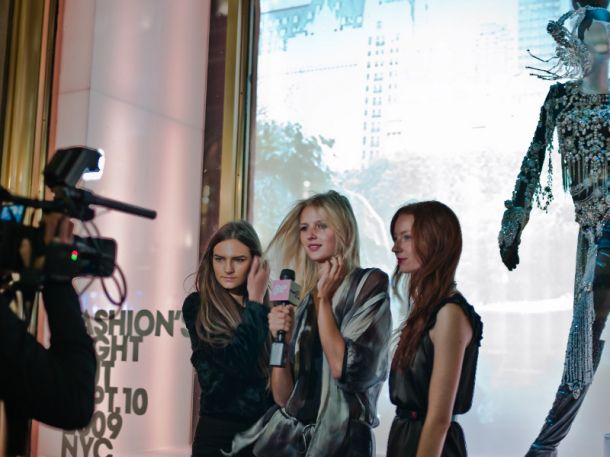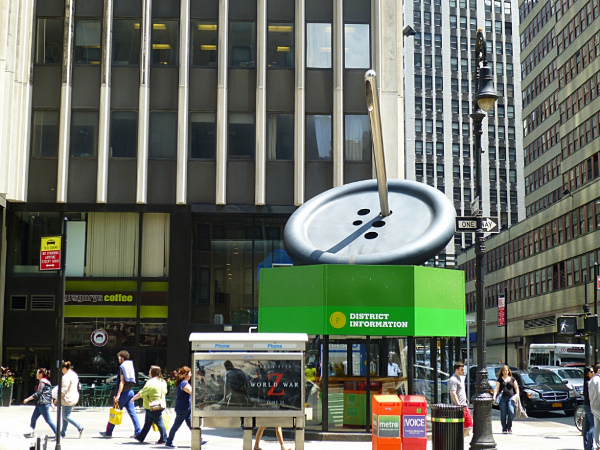
Fashion today is about so much more than the latest color palette or type of ruffle. As a major, globalized industry with cutting edge innovation in the form of wearable technology, fashion is making our lives easier while keeping us stylish.
US Fashion Industry by the Numbers
*Statistics from US Bureau of Labor Statistics |
New York is clearly at the forefront of the fashion industry with retailers generating over $15 billion in sales and $10.9 billion in wages annually. The city is home to the headquarters of major fashion publications such as Harper’s Bazaar, Vogue, InStyle, as well as countless fashion designers including Calvin Klein, Coach, DKNY, Marc Jacobs, Michael Kors, and many more. Budding designers get their start at world-class design schools like FIT, Parsons: The New School for Design, and Pratt Institute. The biannual Fashion Week is estimated by the New York Economic Development Corporation (NYCEDC) to see 232,000 people attending more than 500 events, with $532 million in direct spending and $865 million in economic impact. This year, the numbers are expected to increase, so even if you’re not attending, you’re still likely to experience the high fashion on the streets of New York in the coming weeks!
FASHION HISTORY OF NEW YORK
 Today New York’s epicenter of fashion, the Fashion (or Garment) District has come a long way from its once unsavory reputation. The area from 34th Street to 40th Street and from Sixth to Ninth Avenue was formerly known as the “Tenderloin” or “Devil’s Arcade,” named for the seedy activities that took place there. Only after the Fifth Avenue Association relocated all immigrant garment workers to the area in the early 1920s did the neighborhood begin to improve.But while the development of the Garment District cemented New York as the center of fashion in the United States, the city was still struggling to prove itself against the haute couture coming from Paris. That all changed during World War II. The occupation of Paris led to the French capital’s decline from the forefront of the fashion industry, and, seizing the opportunity, New York launched several programs to usurp the Parisians’ formerly cemented spot at the top.
Today New York’s epicenter of fashion, the Fashion (or Garment) District has come a long way from its once unsavory reputation. The area from 34th Street to 40th Street and from Sixth to Ninth Avenue was formerly known as the “Tenderloin” or “Devil’s Arcade,” named for the seedy activities that took place there. Only after the Fifth Avenue Association relocated all immigrant garment workers to the area in the early 1920s did the neighborhood begin to improve.But while the development of the Garment District cemented New York as the center of fashion in the United States, the city was still struggling to prove itself against the haute couture coming from Paris. That all changed during World War II. The occupation of Paris led to the French capital’s decline from the forefront of the fashion industry, and, seizing the opportunity, New York launched several programs to usurp the Parisians’ formerly cemented spot at the top.
NYC Fashion Moments
|
FASHION INDUSTRY TRENDS TODAY: Sustainability, Social Media, Local Manufacturing
Similar to the tech world, fashion moves incredibly fast. As one trend hits stores, designers are already hard at work on another. Fast fashion stores, like Forever 21, Uniqlo, H&M, and Zara, that offer trendy clothing at cheap prices, have a seen a dramatic increase in sales in the last ten years. However, this constant turnover of trends has necessitated cheap production often leading to unethical factory conditions for workers abroad. As a result, many designers, retailers, and other fashion players are focusing on creating sustainable fashion with styles that reduce environmental and human impact.Another trend in recent fashion is wearable tech—clothing and jewelry items that combine style with purpose. This industry is expected to grow to $9.3 billion in the next three years. Rings that send cell phone notifications, clothes that change color and design, and a shirt that tracks your breathing and heart rate are just a few examples leading the way. New York’s own Fashion District is constantly changing. As manufacturing moved outside of US borders in the 1960s-1980s, the Fashion District saw a decline in tenants and shift in focus. While it is still an important part of the fashion industry historically, today other groups are moving in with theaters, artists, architects, graphic designers, non-profits and commercial office tenants all changing the face of the area. Efforts to bring back manufacturing jobs to the United States are well underway, with programs like the Fashion Fit Movement to develop fashion manufacturing in New York, Hong Kong, and Europe, as well as accelerators such as The Brooklyn Fashion + Design Accelerator. Yet it remains to be seen whether this re-shoring movement will improve American manufacturing long-term.Overall, social media has become an incredibly important part of business. Facebook is still the most widely used across the board, with brands promoting themselves through paid advertising, and using analytics data to learn more about their customer base. As fashion is by nature a very visual business, Instagram has exploded in use and now inspires purchasing decisions for 42% of the 18-29 age group. It’s used by everyone from large corporate retailers like Gap promoting their brand to up-and-coming stylists and designers showcasing their unique looks. Twitter, while not as strong as the more visual platforms, remains relevant for fashion with 1.2 million tweets about NY Fashion Week alone in 2014. The Twitter “buy button,” to roll out sometime in 2015, will allow retailers to turn tweets into sales and may boost this platform’s influence on the industry.Enjoy Fashion Week if you’re attending, and stay tuned for the next installment in our February industry series, an interview with fashion entrepreneur Rie Yano.
New York’s own Fashion District is constantly changing. As manufacturing moved outside of US borders in the 1960s-1980s, the Fashion District saw a decline in tenants and shift in focus. While it is still an important part of the fashion industry historically, today other groups are moving in with theaters, artists, architects, graphic designers, non-profits and commercial office tenants all changing the face of the area. Efforts to bring back manufacturing jobs to the United States are well underway, with programs like the Fashion Fit Movement to develop fashion manufacturing in New York, Hong Kong, and Europe, as well as accelerators such as The Brooklyn Fashion + Design Accelerator. Yet it remains to be seen whether this re-shoring movement will improve American manufacturing long-term.Overall, social media has become an incredibly important part of business. Facebook is still the most widely used across the board, with brands promoting themselves through paid advertising, and using analytics data to learn more about their customer base. As fashion is by nature a very visual business, Instagram has exploded in use and now inspires purchasing decisions for 42% of the 18-29 age group. It’s used by everyone from large corporate retailers like Gap promoting their brand to up-and-coming stylists and designers showcasing their unique looks. Twitter, while not as strong as the more visual platforms, remains relevant for fashion with 1.2 million tweets about NY Fashion Week alone in 2014. The Twitter “buy button,” to roll out sometime in 2015, will allow retailers to turn tweets into sales and may boost this platform’s influence on the industry.Enjoy Fashion Week if you’re attending, and stay tuned for the next installment in our February industry series, an interview with fashion entrepreneur Rie Yano.

